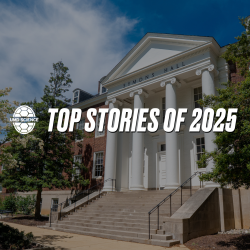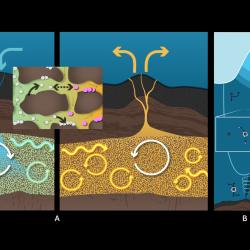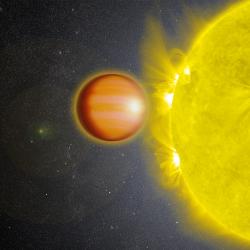Three UMD Graduate Students Receive 2018 NASA Earth and Space Science Fellowships
Da, Gatkine and Marusiak receive awards of up to $45,000 per year
Three graduate students in the University of Maryland’s College of Computer, Mathematical, and Natural Sciences have been awarded 2018 NASA Earth and Space Science Fellowships. The purpose of the fellowships is to ensure continued training of a highly qualified workforce needed to achieve NASA’s scientific goals.
 Cheng Da, Pradip Gatkine and Angela Marusiak will each receive the award, which provides up to $45,000 a year toward a stipend and other expenses.
Cheng Da, Pradip Gatkine and Angela Marusiak will each receive the award, which provides up to $45,000 a year toward a stipend and other expenses.
Cheng Da, Ph.D. student in atmospheric and oceanic science
Advisor: Eugenia Kalnay, Distinguished University Professor of Atmospheric and Oceanic Science
Project: “Tropical Cyclone Predictions by Assimilation of NASA IMERG Precipitation”
Preparing for extreme weather events such as hurricanes requires accurate meteorological forecasting. One way to improve forecasts is by data assimilation, or combining actual weather conditions such as rainfall with certain weather prediction models. However, current data assimilation methods make assumptions that do not apply to extreme weather events. Da will develop and test more realistic methods for assimilating rainfall data to improve hurricane forecasting accuracy.
Da earned bachelor’s and master’s degrees in meteorology from Florida State University.
 Pradip Gatkine, Ph.D. student in astronomy
Pradip Gatkine, Ph.D. student in astronomy
Advisor: Sylvain Veilleux, Professor of Astronomy
Project: “Using Gamma-Ray Bursts to Probe the Metal Enrichment History of the Universe”
Most of the universe is made up of the two lightest elements, hydrogen and helium. How did all other elements, which astronomers call "metals," accumulate in the universe? Astronomers believe that the answer may lie in the gas that surrounds a galaxy, known as the circumgalactic medium, which acts as a reservoir of metals. To probe how metals move between circumgalactic media and galaxies, Gatkine will analyze observations of more than 100 gamma-ray bursts, which are bright flashes of light from energetic explosions in distant galaxies. Gatkine believes that these bursts, which carry chemical and physical information, will reveal information about the abundance of metals and how galaxies may have transported metals to the circumgalactic media.
Gatkine earned a bachelor’s degree in mechanical engineering at the Indian Institute of Technology Bombay.
 Angela Marusiak, Ph.D. student in geology
Angela Marusiak, Ph.D. student in geology
Advisor: Nicholas Schmerr, Assistant Professor of Geology
Project: “Single-Station Seismometer Analogs and Approaches for the Investigation of Icy Worlds”
Europa, one of Jupiter’s moons, features a seismically active, icy shell that scientists would like to study on a future mission—potentially by landing a single seismometer on Europa’s surface. To simulate such a mission, Marusiak will collect data from seismic instruments located at the Gulkana Glacier in Alaska, a stand-in for Europa. First, Marusiak will probe the glacier's interior structure. Then she will develop algorithms to identify seismic events, such as icequakes, and determine the frequency and duration of these events. Finally, Marusiak will evaluate her algorithms by testing them on simulated data that mimics the seismic events that scientists expect to encounter on Europa. The results will help scientists evaluate instrumentation for future missions to Europa or similar worlds.
Marusiak earned a bachelor's degree in geophysics and planetary sciences at Boston University.
###
Media Relations Contact: Irene Ying, 301-405-5204, zying@umd.edu
University of Maryland
College of Computer, Mathematical, and Natural Sciences
2300 Symons Hall
College Park, MD 20742
www.cmns.umd.edu
@UMDscience
About the College of Computer, Mathematical, and Natural Sciences
The College of Computer, Mathematical, and Natural Sciences at the University of Maryland educates more than 9,000 future scientific leaders in its undergraduate and graduate programs each year. The college’s 10 departments and more than a dozen interdisciplinary research centers foster scientific discovery with annual sponsored research funding exceeding $175 million.







